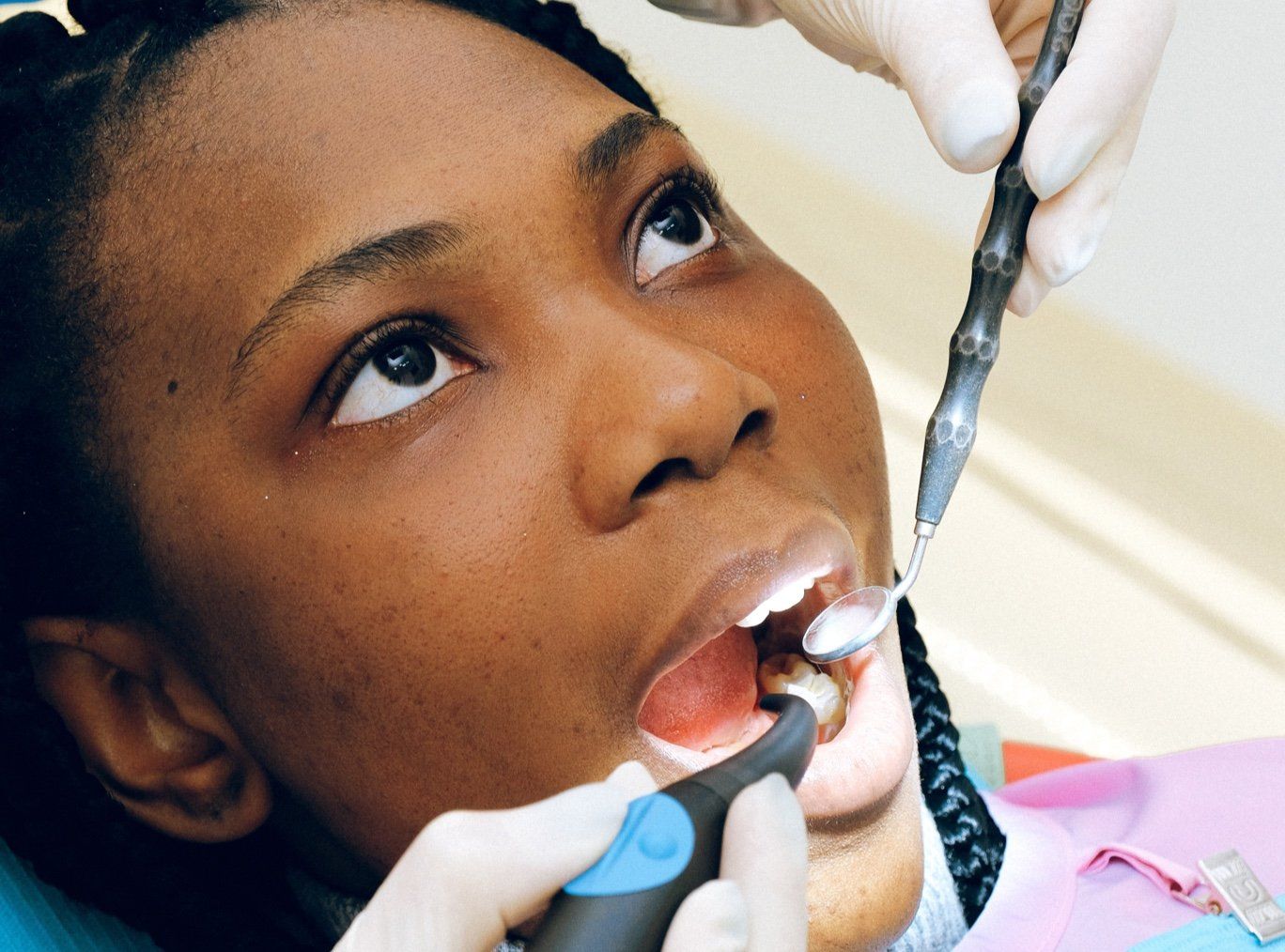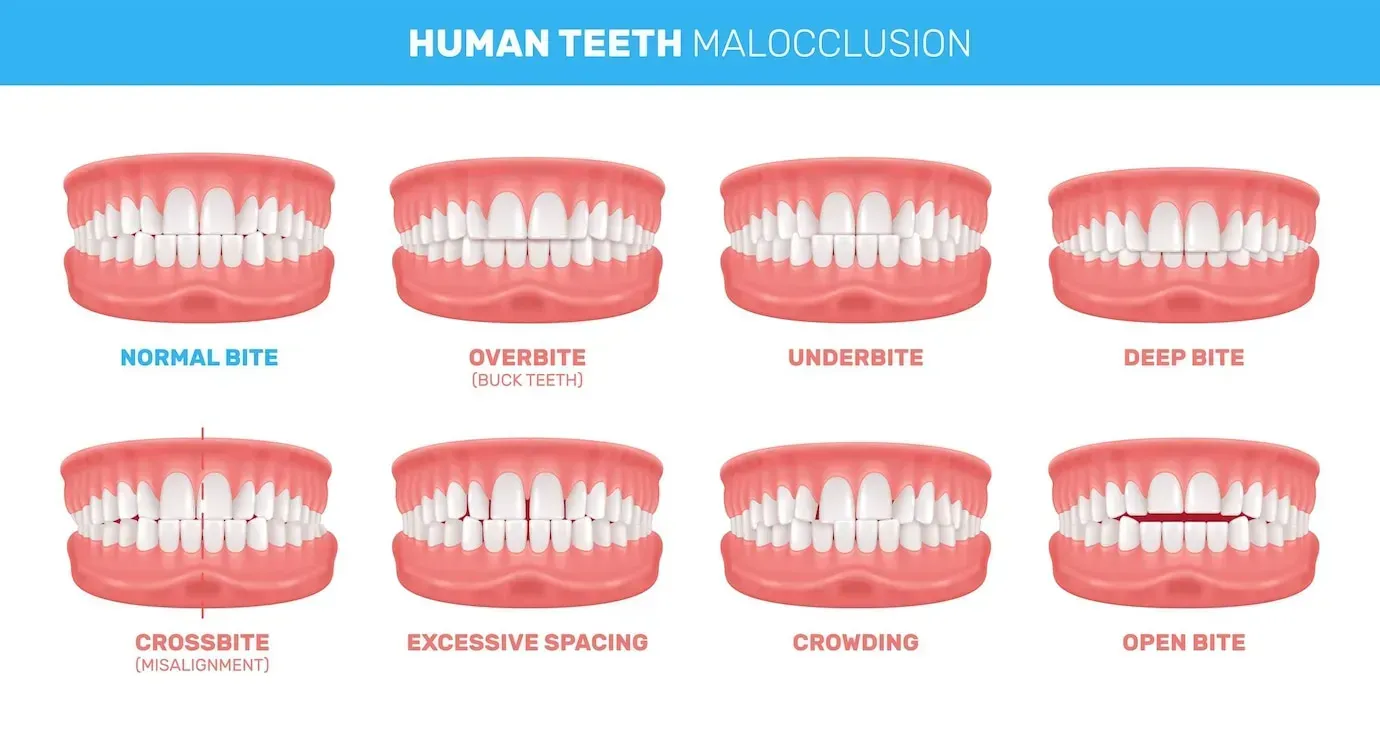How to Know If You Need Orthodontic Treatment

How to Know If You Need Orthodontic Treatment: Key Signs and Symptoms
Orthodontic treatment addresses more than just the appearance of your teeth; it can improve bite alignment, ease chewing, and help prevent long-term oral health issues. Identifying when orthodontic care might be necessary, however, isn’t always straightforward. While some signs, such as crowded or misaligned teeth, are visible, others, like jaw pain or difficulty chewing, may be less obvious.
This guide outlines the primary signs that suggest a need for orthodontic treatment. It also covers the assessment process used by orthodontists to determine if treatment is required, providing a clear view of what to expect in an evaluation.
If you'd prefer to skip the details and get personalized guidance, Hansen Orthodontics in El Paso, TX, offers free in-person and virtual consultations. Connect with an expert to discuss your options directly.
Common Signs That Indicate You Might Need Orthodontic Treatment
Recognizing the early signs of orthodontic issues can prevent future complications and simplify treatment. Here are some of the most common indicators that orthodontic care may be beneficial.
Crowded or Crooked Teeth
Crowded or misaligned teeth are often the most noticeable sign that orthodontic treatment could be needed. When teeth don’t have enough space, they can overlap, twist, or press against each other.
Potential Issues: Crowded teeth make brushing and flossing difficult, increasing the risk of tooth decay and gum disease. In some cases, misalignment can even strain the jaw, leading to discomfort over time.
Overbite, Underbite, and Crossbite
Bite issues—such as overbite, underbite, and crossbite—are common indicators for orthodontic treatment. These conditions refer to how the upper and lower teeth come together and can often lead to functional problems if not corrected.
Identifying Bite Issues:
- Overbite: The upper front teeth overlap significantly with the lower front teeth.
- Underbite: The lower front teeth extend in front of the upper front teeth.
- Crossbite: The upper teeth sit inside the lower teeth when biting down.
Consequences of an Improper Bite: Bite misalignment can cause uneven wear on teeth, jaw pain, and even difficulties with speech. Over time, an improper bite can also affect the structure of the jaw and the shape of the face.
Gaps Between Teeth
Spaces or gaps between teeth, also known as diastema, are another indicator for orthodontic treatment. While some people naturally have gaps between certain teeth, excessive spacing can create functional and aesthetic concerns.
Causes of Gapped Teeth:
Gaps often occur when there’s extra space in the jaw, or when teeth are too small relative to the jawbone. Thumb-sucking and other habits during childhood can also create gaps between teeth.
Long-Term Effects:
If left untreated, gaps can allow teeth to shift over time, potentially leading to bite issues or jaw misalignment. Large gaps can also trap food particles, increasing the risk of gum irritation and periodontal issues.
Difficulty Chewing or Speaking
Difficulty chewing or speaking can sometimes indicate underlying orthodontic issues. If your teeth or jaw alignment interferes with these everyday functions, orthodontic care may help improve them.
Link to Orthodontic Issues:
When teeth don’t align properly, chewing can feel uncomfortable or strained. Similarly, misalignment or bite issues can affect how the tongue moves within the mouth, potentially impacting speech clarity.
When to See a Specialist:
If chewing is consistently uncomfortable or if there are noticeable speech challenges—such as slurring or lisping—an orthodontist can assess if the issue is related to jaw or teeth alignment and recommend appropriate treatment.
Teeth Grinding or Jaw Pain
Frequent teeth grinding, also known as bruxism, and persistent jaw pain can both be signs of alignment issues that may benefit from orthodontic treatment. These symptoms often indicate that the jaw is under strain, which can lead to further complications if not addressed.
Signs of Bruxism and TMJ Issues:
Bruxism often occurs at night and can result in headaches, worn-down teeth, and jaw discomfort. Jaw pain, particularly near the temporomandibular joint (TMJ), may signal stress from improper alignment or an imbalanced bite.
Impact on Oral Health:
Untreated grinding can wear down enamel, making teeth more vulnerable to decay and sensitivity. Chronic jaw pain can also lead to difficulty chewing and further jaw complications over time.
The Assessment Process: How Orthodontists Diagnose Treatment Needs
When you suspect orthodontic issues, an initial assessment with an orthodontist is the first step. This evaluation allows the orthodontist to determine the extent of alignment or bite problems and recommend the best treatment options.
Consultation Overview
During a consultation, the orthodontist will examine your teeth, jaw, and bite to identify any misalignments or other issues. This process typically includes a combination of visual exams and diagnostic tools to get a clear understanding of your oral structure.
Diagnostic Tools Used in Orthodontics
Visual Examination
Orthodontists first conduct a thorough visual inspection of teeth alignment, bite, and jaw structure. This helps them pinpoint visible issues such as crowding, spacing, and bite irregularities.
Digital X-rays and Imaging
X-rays and digital imaging reveal underlying problems not visible to the naked eye, like impacted teeth, jawbone irregularities, or tooth root positions. These tools provide a comprehensive view of your oral health, helping in the development of a targeted treatment plan.
Bite Analysis
In a bite analysis, the orthodontist assesses how your upper and lower teeth fit together when you bite down. This evaluation helps diagnose overbite, underbite, crossbite, and any jaw misalignment issues that might require correction.
Why Early Orthodontic Intervention Matters
Addressing orthodontic issues early can make a significant difference in the effectiveness and duration of treatment. Early intervention often involves simpler methods and helps prevent more severe complications down the road.
Benefits of Addressing Issues Early
When orthodontic problems are caught in their early stages, treatment can often be less invasive and more efficient. Correcting alignment or bite issues before they progress can reduce the risk of developing gum disease, tooth decay, and jaw strain.
Avoiding Complex Procedures Later
Untreated orthodontic issues can worsen over time, sometimes requiring more extensive procedures, such as surgery, in adulthood. Early intervention not only simplifies treatment but also supports better long-term oral health, ensuring a healthy, well-aligned smile as you age.
Conclusion
Recognizing the signs of orthodontic issues early can make a significant difference in both treatment outcomes and overall dental health. From crowded teeth and bite issues to jaw pain and speech difficulties, orthodontic treatment can address a range of concerns that impact function and appearance. Knowing what to look for empowers you to seek timely care and prevent complications.
If you’d rather speak directly with a professional, Hansen Orthodontics in El Paso, TX, offers free consultations, both in-person and virtual. Connect with an expert today to discuss your needs and explore the best treatment options for your smile.


